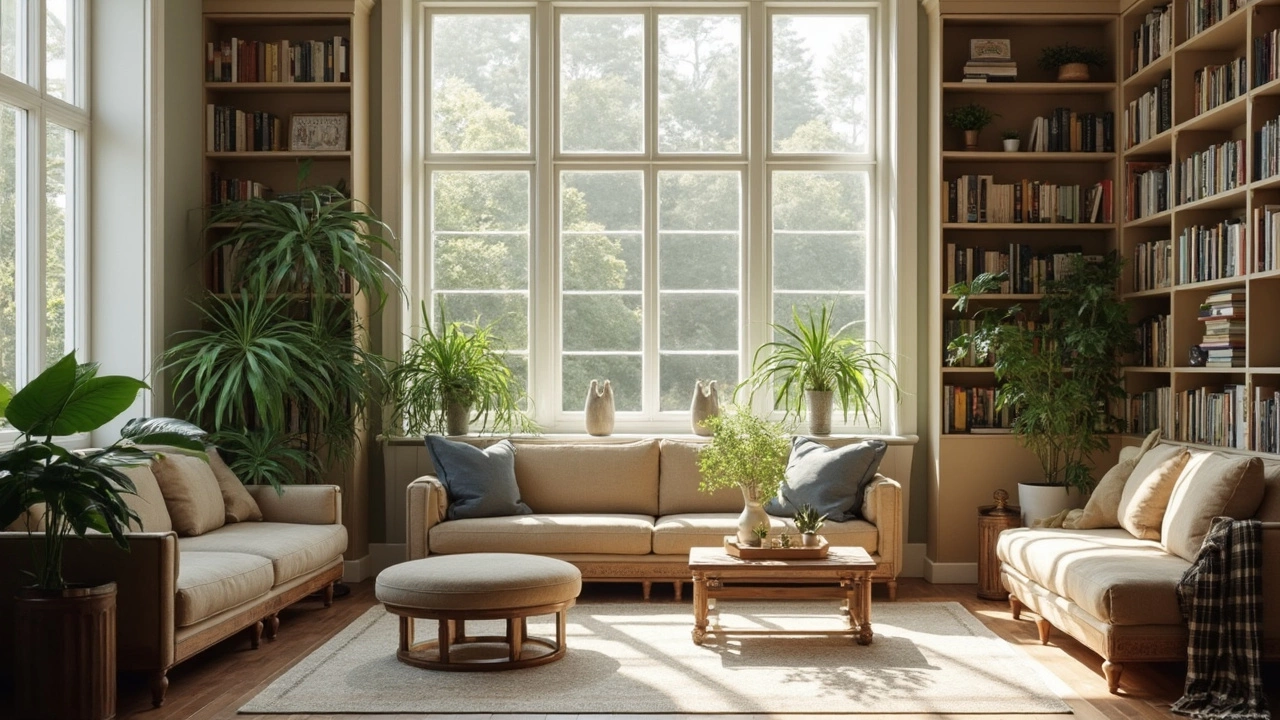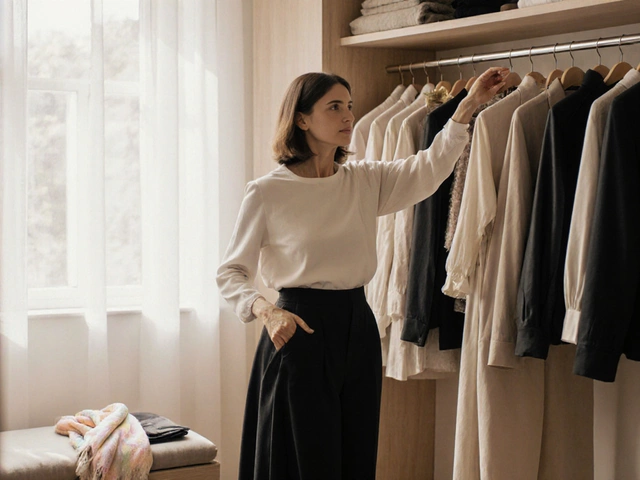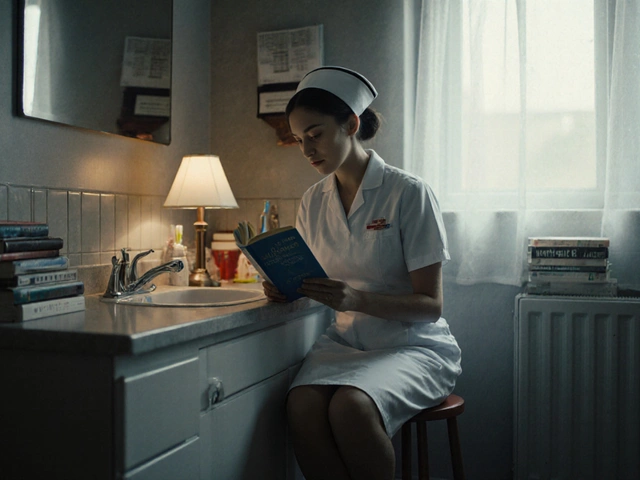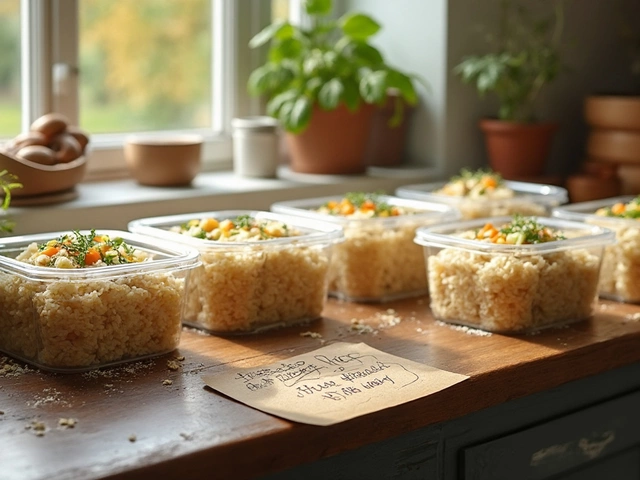Ever feel like your home is more chaos than calm? You're not alone! Getting your home in order isn’t about a one-off purge; it's more like creating habits that stick. Let's break it down simply and stare the mess in the face without getting overwhelmed.
Start with understanding your space. Each room serves a purpose, right? Identify what each space is truly meant for and what it isn’t. This helps in deciding what stays and what needs to go elsewhere—or go entirely.
Now, let's talk decluttering essentials. Think of it as editing your life: what do you genuinely need, and what's just collecting dust? A good rule of thumb is if you haven't used something in a year, reconsider its place in your home.
- Understanding Your Space
- Decluttering Essentials
- Smart Storage Solutions
- Daily Habits for Neatness
- Tech Tools to Assist
- Maintenance and Mindfulness
Understanding Your Space
Before diving into organization, it’s key to get a grasp on your space. You know that feeling when you find a hidden corner in your house and think, 'Oh, that’s where I put it!'? This section is all about maximizing those moments.
Firstly, each room in your home should have a primary function. Is your living room for relaxing or entertaining? Maybe its dual purpose needs a rethink for better home organization. Step back and look at what the room is used for the most. This insight is golden and can determine how you arrange it.
Room by Room Game Plan
Let's break it down, room by room:
- Living Room: Typically, the main hangout zone. Keep it cozy with seating and consider creative storage for books or kids’ toys like ottomans that double as storage.
- Kitchen: The heart of many homes. Make sure essentials are at arm’s reach and tools you rarely use are stashed out of the way.
- Bedroom: Your sanctuary. Keep it calm and clutter-free. Use under-bed storage for things you need but don’t use daily.
- Bathroom: A place to refresh both mind and body. Limit the items on your counters to everyday essentials only.
Maximizing Space: Tips and Tricks
One clever way to make more of your space is using vertical storage. Think tall bookshelves or kitchen hooks for mugs and towels. Not only does it look neat, but it also frees up that precious counter space!
Another trick: use baskets or boxes with labels. It’s visually appealing and makes finding items less of a treasure hunt. And for those tighter spots in your home, try mirrors to give the illusion of more room.
Prioritizing and Planning
Tackling each room with a clear plan will save you time in the long run. Create zones based on activities — like a reading corner or a dedicated work area. This not only boosts functionality but also lets every family member know where to find stuff.
When in doubt, draw up a room map. Just a rough sketch can be enough to visualize what goes where and inspire rearrangements that might work even better than your current setup.
Understanding your space sets a strong foundation for a more organized home. It’s a process well worth the effort when you find everything you need without the stress!
Decluttering Essentials
When it comes to home organization, decluttering is where the magic begins. It’s more than just tidying up; it's about creating a space that truly works for you. Ready to roll up your sleeves? Here’s how to tackle this crucial step.
Start Small
Don’t dive headfirst into the whole house. Begin with just one room—better yet, one corner of a room. Maybe your overstuffed closet or that kitchen drawer you haven’t dared open in months. Break it down into chunks so it feels manageable and less like cleaning Everest.
Use the "Keep, Toss, Donate" Strategy
As you sort through items, create three piles: one for items to keep, one for those to toss, and another for things to donate. Be ruthless! If an item doesn’t serve a purpose or bring joy, it’s time to let it go. Remember, keeping things "just in case" is a slippery slope to clutterville.
- Keep: Only if it’s useful or meaningful.
- Toss: Broken items or those beyond repair.
- Donate: Anything in good condition that could help someone else.
Set Realistic Goals
Rome wasn’t built in a day, and neither is a clutter-free home organization. Set a realistic timeline and goals for your decluttering projects. Give yourself some grace and recognize the achievements, no matter how small.
One In, One Out
Adopt the ‘One In, One Out’ rule. For every new item you bring into your home, send an old one on its way. This works wonders in maintaining balance and preventing the build-up of excess stuff.
Get Everyone Involved
Decluttering as a family can turn a daunting task into a fun group activity. Assign roles based on age or preference. Younger kids can help with sorting toys, while teenagers might be more interested in organizing their gadgets. It brings teamwork into the mix and lightens the load.
Consistency is key in decluttering. It's about forming habits that last beyond one weekend of cleaning frenzy. Reach out into your routine gradually, and soon, clearing out will become second nature!
Smart Storage Solutions
Ever open a cupboard and have things fall out at you? Yeah, we've all been there. Smart storage solutions aren't about cramming as much as you can into every nook and cranny. It’s about making the most of your space without feeling claustrophobic.
Make Use of Vertical Space
Look beyond eye-level. Vertical storage is like finding extra room you didn’t know existed. Tall bookshelves, hanging racks, or wall-mounted hooks can make a massive difference. Perfect for often-used items like coats in the entryway or kitchen pots and pans.
Multipurpose Furniture
Think of furniture that does double duty. A coffee table with drawers or a bed frame with built-in storage can hold a lot more than expected and keeps things out of sight. Smart, right?
“Home organization is all about creating a space where you can thrive. Every item should have a designated home.” — Marie Kondo
Clear Storage Bins
Clear bins are your best friend. They're practically clutter ninjas, hiding messes in plain sight but letting you see what's inside without digging through. Perfect for garages, pantries, and under the sink.
- Label everything so items return to their designated spot.
- Use stackable containers to make the most of closet shelves.
- Consider transparent drawer dividers for office supplies or kitchen utensils.
Install Overhead Storage
Especially useful in garages, overhead storage racks free up floor space for those of us tight on room. Securely mounted to the ceiling, they're ideal for bulky, less-frequently used items.
Don't Forget Corners
Corner shelves and cabinets can be lifesavers, using up those annoying dead zones in a room.
By integrating these smart storage solutions into your home, you're not just tidying up; you're creating a space that works for you, not against you.
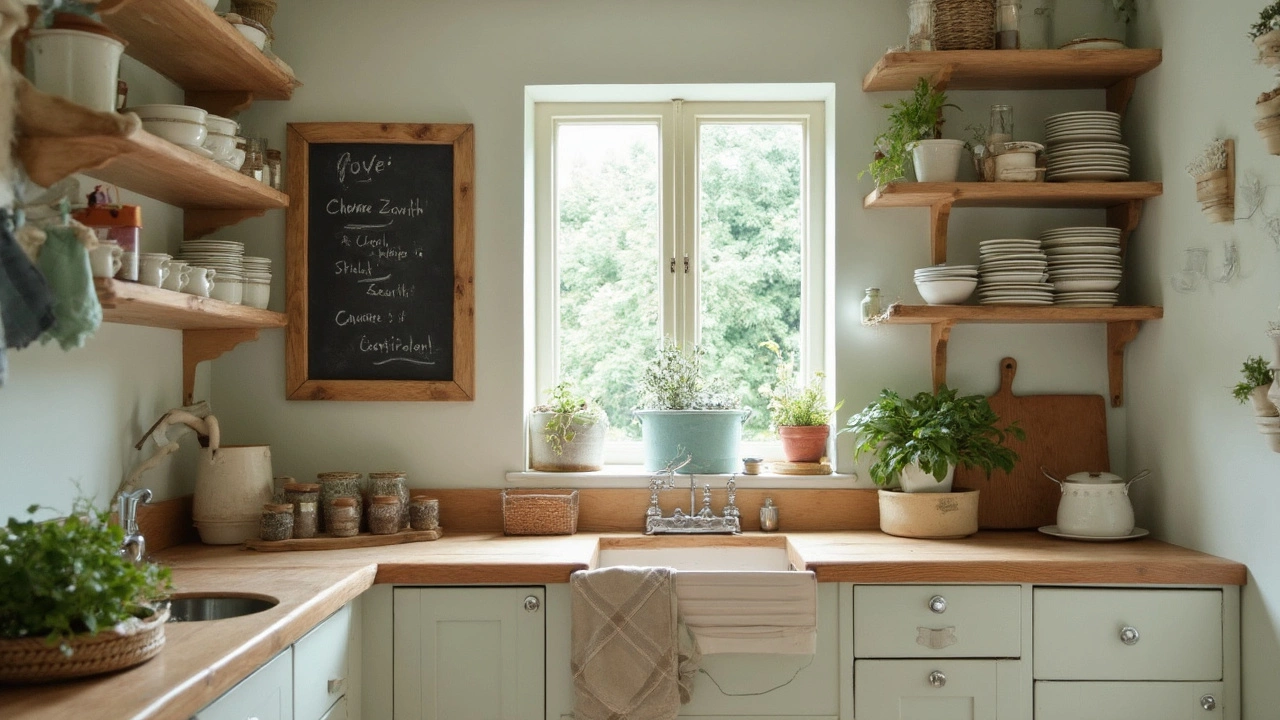
Daily Habits for Neatness
Keeping your home neat every day doesn’t need to be a burdensome chore. It’s all about establishing simple routines that fit into your lifestyle. When daily habits become second nature, maintaining a tidy home feels less like a task and more like a part of your day.
Make Your Bed Every Morning
This might sound basic, but making your bed gives a sense of order right from the get-go. Plus, it sets the tone for other tidiness habits throughout the day. Admiral William H. McRaven once said in his famous commencement speech that making your bed can even change your life - it’s all about the discipline and pursuit of excellence.
Go by the Two-Minute Rule
If a task takes less than two minutes to complete, do it immediately. Whether that’s hanging a coat, putting dishes in the dishwasher, or wiping down the counter, tackling small tasks on the spot keeps them from piling up.
One Thing In, One Thing Out
This habit helps you avoid accumulating extra stuff. When you bring something new into your home, find something you can part with. This keeps your belongings in check and maintains your organization.
10-Minute Evening Tidy Up
Before you wind down for the evening, spend just 10 minutes tidying up. Resetting your space—fluff pillows, straighten magazines, put away stray items—can make a huge difference. You’ll wake up to a neat home that’s ready for a new day.
Embrace Vertical Space
Use walls and other vertical spaces to free up floor space and create a more clutter-free environment. Shelves, hooks, and pegboards can keep items off surfaces and make your home feel airy.
Here's a quick reminder of how these small changes can make a big impact:
| Daily Task | Impact |
|---|---|
| Make Bed | Starts Day with Accomplishment |
| 2-Minute Rule | Eliminates Small Clutter |
| One In, One Out | Maintains Balance |
| Evening Tidy | Prepares You for Tomorrow |
| Vertical Use | Saves Floor Space |
Small tweaks here and there in your daily routine can make loads of difference in keeping your home organized. Remember, consistency is key.
Tech Tools to Assist
In the modern age, even the most old-school approaches can benefit from a little tech boost. You'd be surprised how a couple of apps or smart gadgets can keep your home organization goals on track. Here are some ways technology can make organizing less of a chore.
Organizing Apps
There are apps for almost everything these days, including keeping your space tidy! Consider tools like Evernote or Trello for organizing lists. They help you track what you have, what you need, and what goes where. The visual boards in Trello are particularly handy for sorting projects or priorities.
Smart Home Devices
Smart devices can turn your home into an efficiency hub. Think about decluttering with voice-activated assistants like Alexa or Google Assistant. Set reminders, shopping lists, or even cleaning tasks through simple voice commands. These devices aren't just gadgets; they are assistants to help you keep tabs on home tasks.
Inventory Management Systems
If you've got a lot to keep track of, like in a pantry or storage room, try using barcodes and a scanner app. You can manage what comes in and goes out, so you don't accidentally double up on items or forget what you have. It's a smart way to ensure your spaces stay organized.
Getting the most out of these organization tips doesn't mean you need to spend a fortune or become a tech wizard. Choose tools that fit your style and make them work for you. Small tech-assisted tweaks can lead to big improvements in keeping your home neat and your mind clear.
Maintenance and Mindfulness
Keeping a neat home requires consistency and a sprinkle of mindfulness. Maintenance isn't just about tidying up when things get out of hand; it's about creating habits that prevent clutter from building up in the first place.
Daily Habits for a Tidy Space
A little effort each day goes a long way. Establish a routine where you spend just 10-15 minutes tidying up daily. Simple tasks like making the bed, washing dishes right after meals, and putting away clothes can create a huge difference. Consistency here is key!
- Home organization tip: Keep a "clutter basket" in high-traffic areas. Use it for random things that end up lying around. Empty it at the end of each day by returning items to their rightful place.
- Assign a specific time each day to clear surfaces. Visual clutter can make a tidy home feel messy.
Monthly Rituals for Decluttering
Beyond daily habits, have a monthly ritual to reassess what's in your home. This keeps longer-term clutter in check.
- Review storage spaces like cupboards and drawers. Pull things out, and see if there's anything you've outgrown or no longer need.
- Donate items that serve no purpose but could benefit someone else.
Mindfulness in Home Organization
Mindfulness isn't just a buzzword. Being aware of your space and how it impacts your mood and productivity can motivate you to develop better organization tips. Consider how your surroundings affect your mental clarity. A tidy space can mean a calmer mind.
You can even use mindfulness techniques to practice appreciation for the process itself. Appreciating the comfort of a well-organized home can make maintaining it feel less like a chore and more like an act of self-care.
| Task | Frequency |
|---|---|
| Daily Cleaning | 10-15 mins per day |
| Monthly Declutter | Once a month |
Think of maintenance as a journey, not a destination. By embracing simple, consistent habits, you’ll find that maintaining a clutter-free space feels less like an uphill battle and more like a new, fulfilling lifestyle choice.
